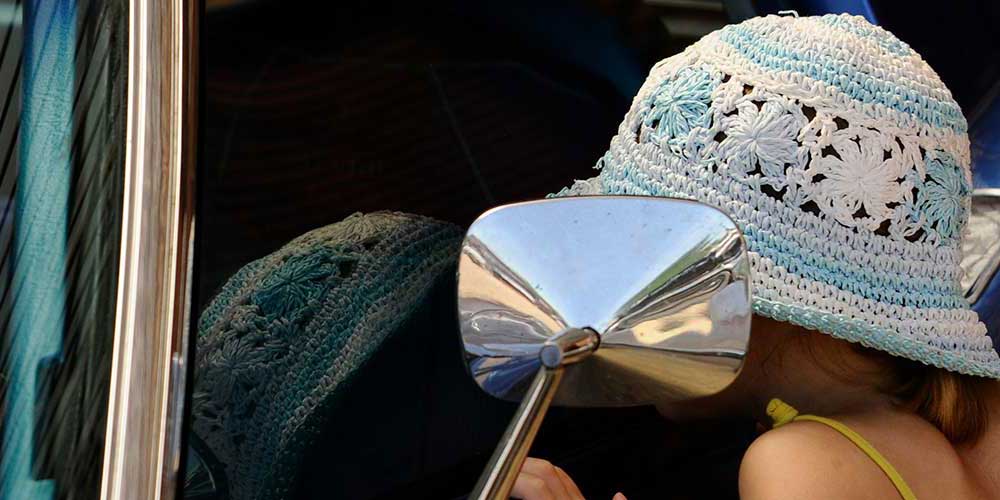By Robert Tate, Automotive Historian and Researcher
Images Courtesy of General Motors Media Archives
Published 5.19.2021
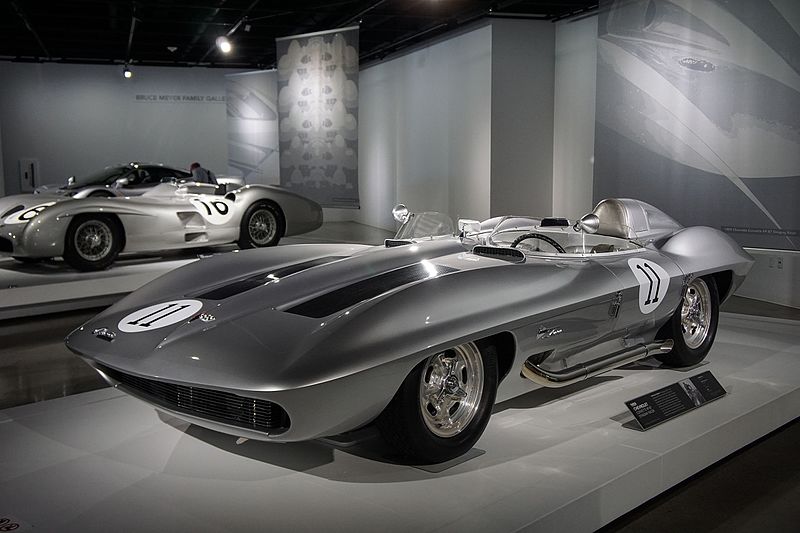 1959 Corvette XP 87 Stingray on display at the Peterson Automobile Museum
1959 Corvette XP 87 Stingray on display at the Peterson Automobile Museum
The history of the Chevrolet Corvette with its rakish good looks and great power has always excited automotive enthusiasts. With the Corvette, General Motors created its own American sports car tradition.
One of the most popular Corvettes of all time was the Corvette Sting Ray Racer introduced in 1959. This model continues to have a great following, and this story is a follow up (by popular demand) to a Story of the Week I wrote from September 25, 2019 about the Corvette Sting Ray Racer.
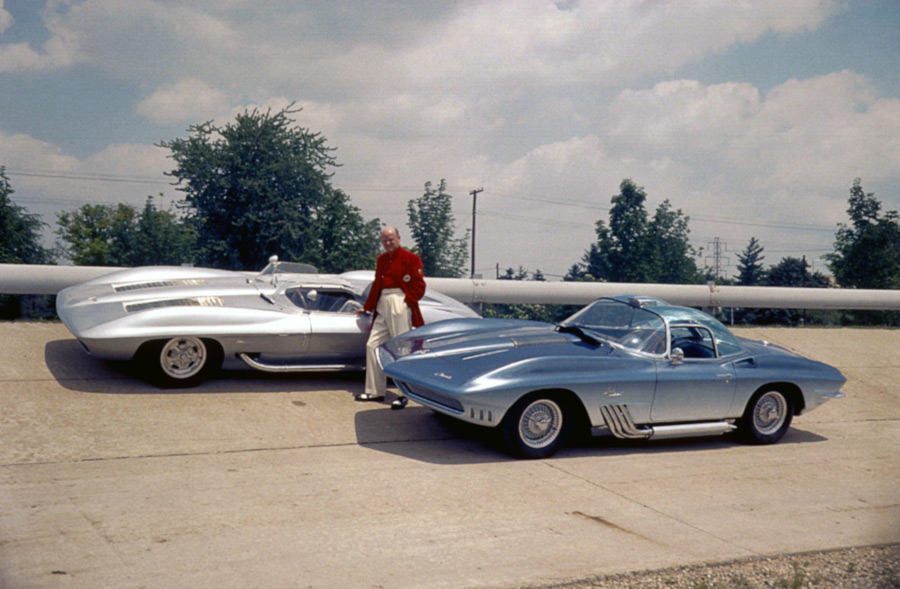 Bill Mitchell standing next to the 1959 Corvette Sting Ray racer and the 1961 Corvette Mako Shark XP 755 (GM Media Archives)
Bill Mitchell standing next to the 1959 Corvette Sting Ray racer and the 1961 Corvette Mako Shark XP 755 (GM Media Archives)
When automotive enthusiasts speak about the 1959 Corvette Sting Ray Racer, the first names mentioned are usually designer Bill Mitchell and engineer Zora Arkus-Duntov, rightfully known as “Mr. Corvette.” For me, the 1959 Corvette Sting Ray racer model is on my list of the greatest looking designs that GM developed during the 1950s.
From the 1950s to 1970s, Bill Mitchell was one of the most powerful and influential designers in the world. He was truly a Corvette person and devoted to high-performance and great styling.
 The Corvette Sting Ray emblem
The Corvette Sting Ray emblem
Developed in Studio X, the Sting Ray racer design was developed in 1957. By February of 1958, the side exhausts became a part of the design theme for the vehicle’s appearance. Arkus-Duntov created an all-new lightweight tubular spaceframe for the model to help the vehicle’s suspension. After its introduction by the GM design staff, the model was painted red then later repainted in silver for the 1960 campaign.
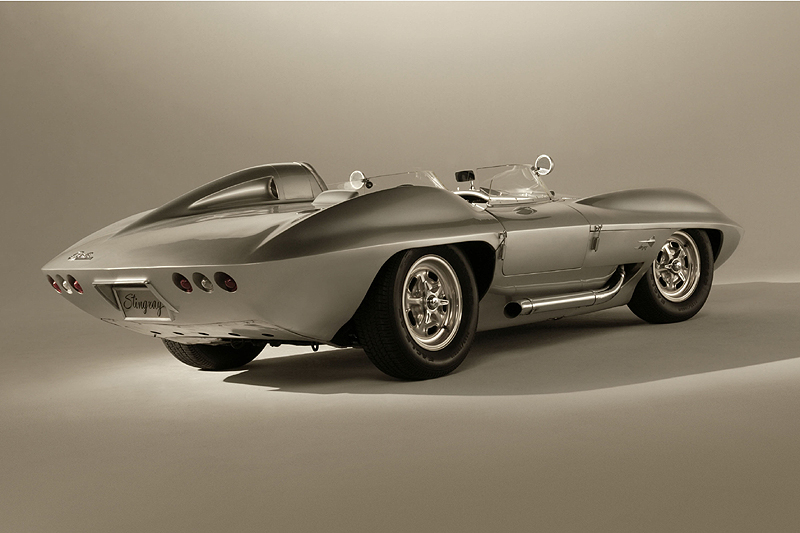 Chevrolet Corvette Sting Ray prototype (GM Media Archives)
Chevrolet Corvette Sting Ray prototype (GM Media Archives)
In 1957, the “Mule,” which it was called at the time, was driven by Juan Manuel Fangio and Stirling Moss for track testing at Sebring in 1957. The results were admired by Mitchell and other racing fans as well. Mitchell also brought in Larry Shinoda to help design the streamlined appearance for the vehicle.
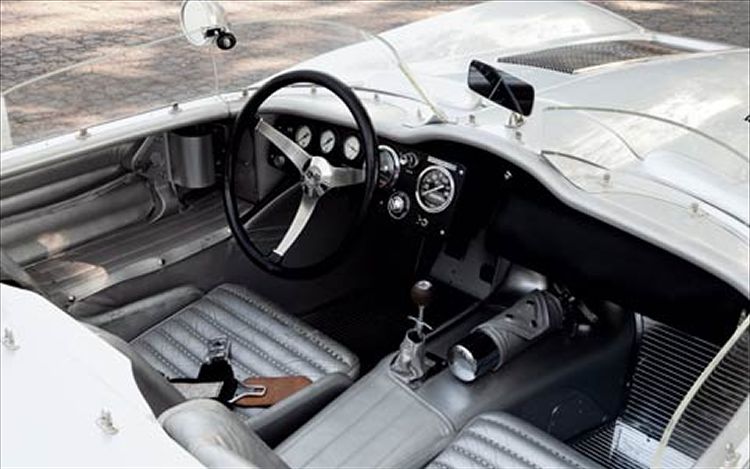 1959 Chevrolet Corvette Sting Ray interior (GM Media Archives)
1959 Chevrolet Corvette Sting Ray interior (GM Media Archives)
The Sting Ray had a short racing career. Mitchell even used his own money to develop and finance the model into a high-performance racing machine. The 1959 model represented a total transformation of a great looking sports car and was admired by many. When Mitchel started driving the vehicle on the road and to work, the Sting Ray was given a windscreen for the driver and passenger, along with a longer grille for that great looking front end appearance.
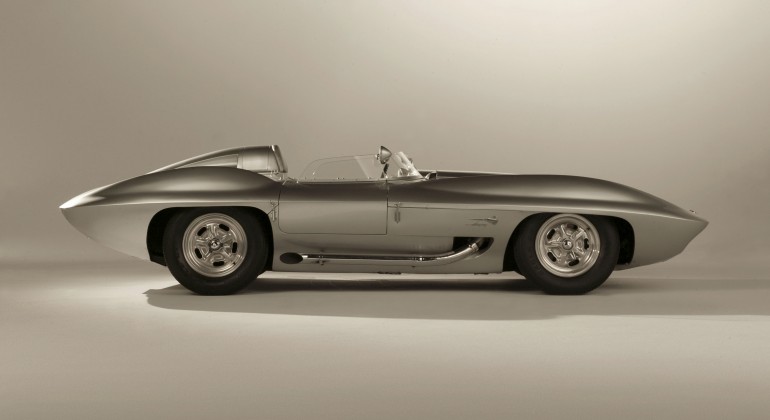 Side view of the Corvette Sting Ray racer (GM Media Archives)
Side view of the Corvette Sting Ray racer (GM Media Archives)
After concluding its brief racing career, the Sting Ray was unveiled at Chicago’s McCormick Place auto show on February 18, 1961. It was Mitchell who decided to restore the racer back to its popular silver paint job from the red. The chassis was further developed with more added features and a larger-displacement small block engine was used as well. Dunlop disc brakes and fuel injection were also added.
 Author Peter Brock with his Corvette book (Brock Racing Enterprises)
Author Peter Brock with his Corvette book (Brock Racing Enterprises)
Mitchell felt the first generation Corvettes were too rounded and soft, so the Corvette Sting Ray Racer featured a sharper body edge that made it work. The body was made of thin fiberglass with aluminum reinforcement which was eventually replaced with balsa wood.
Anyone interested in the background and origins of the 1959 Corvette Sting Ray Racer should explore “Corvette Sting Ray: Genesis of An American Icon” by Peter Brock with a foreward by Ed Welburn, former VP of Global Design at General Motors. In addition, automotive enthusiasts who would like to have a replica of the Corvette Sting Ray Racer, check out the 1/18 scale diecast models manufactured by AUTOart.
 Autoart Chevrolet Corvette Sting Ray diecast model (Autoart)
Autoart Chevrolet Corvette Sting Ray diecast model (Autoart)
In conclusion, the Sting Ray Racer was and continues to be an immensely popular model with auto and racing enthusiasts.
Bibliography
Auto Editors of Consumer Guide. “Corvette 50th Anniversary.” Louis Weber, Publications International 2003.
Editors of Consumer Guide. “Corvette, America’s Only True Sports Car.” Louis Weber, 1979.
Ludvigsen, Karl. “Corvette, America’s Star-Spangled Sports Car: The Complete History.” Automobile Quarterly Publications, 1973.


